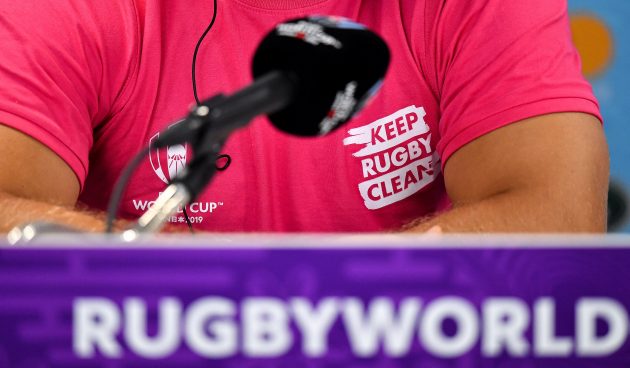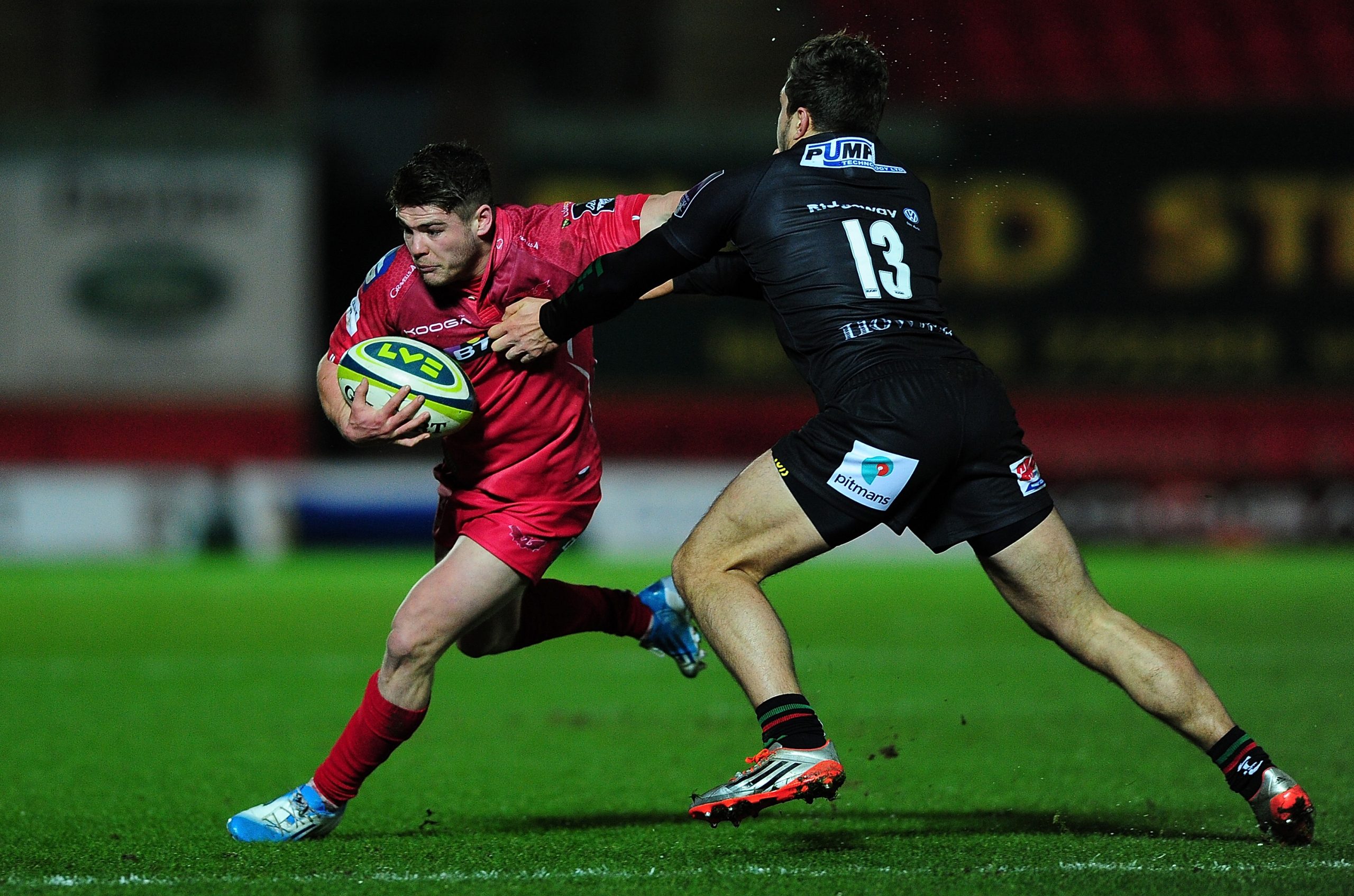What can drive a young player to use prohibited substances? We spoke to Professor Sue Backhouse from Leeds Beckett University
Too Much, Too Soon: Vulnerability and the risk of schoolboy doping
When addressing the risk of doping with young rugby players, the language we use is important.
“Our interest is understanding what drives youth behaviour,” explains Sue Backhouse, Professor of Psychology and Behavioural Nutrition and the Director of Research for Sport and Exercise Science in the Carnegie School of Sport at Leeds Beckett University, who produced a study in 2018 that highlighted the vulnerability of schoolboys looking for an edge.
“That means trying to understand things from the perspective of the person, and not to judge their actions through the lens of the stigmatising media headlines, such as ‘filthy cheat’ and ‘dirty athlete’.
“There’s more complexity to doping in sport and often (young players caught out) are exposed to opportunities and situated within environments that might, in itself, be nudging them towards wrongdoing. As a research team we really want to get underneath that behaviour and ask the questions of not only athletes and players, but also athlete support personnel that engage and support the players and the broader team.”

Long-read: Our latest special report is in the April edition of Rugby World
In Leeds Beckett’s 2018 research, 771 schoolboys from 42 English counties and 135 teachers and coaches from schools and colleges across England took part in a survey. There were also one-to-one interviews carried out with 25 schoolboys and five teachers. Of the total, 53% of the young athletes were rugby union players.
According to Backhouse, the drive to study vulnerability for this group, from the Rugby Football Union’s point of view, was borne of concerns around an increased number of positive doping cases coming out of schools, as well as a desire to learn more about the ‘why?’
However, in our recent long-read ‘Too Much, Too Soon’ we mentioned a line from the 2020 paper Applied Sport Science for Male Age-Grade Rugby Union in England, in which it was stated: “Despite the importance, the prevalence of systematic psychological inquiry into both senior and youth populations worldwide in the sport is scarce. To date, five studies have investigated the psychological challenges and developmental demands faced by age-grade RU players.”
Backhouse also mentions this lack of research in relation to the study of doping behaviours underneath the elite level – a scarcity that can pose a challenge for the field. Without a real evidence base, without understanding, Backhouse asks: “How do you design education programmes and interventions that are going to get to some of the behavioural issues at play, if you don’t know more about the behaviours you are trying to sustain or change?”

Spread the word: The anti-doping message in 2014 (Getty Images)
We have all heard anecdotes and rumours of doping in the youth game around the world. How we scrutinise the issue will define our next steps to combatting a problem that has become one of the game’s hottest talking points.
Backhouse says of Leeds Beckett’s approach: “We’re obviously looking at the use of prohibited substances and methods – that’s one of ten anti-doping rule violations, or ADRVs– and we consider such use at different levels, from youth to older athletes. We’re also looking at the ADRV, complicity, in terms of not reporting wrongdoing because of the fear of speaking up about doping. So we’re trying to be holistic in the way that we research this problem… And the problem’s not going away.
“We’re also interested in looking at the ‘detection-deterrent’ approach, which is really ‘let’s do more tests’. The elite sport system has been doing that for a long time and yet this threat to the integrity of sport still persists. And increasingly, some of the bigger cases where people have the courage to speak up, they’re showing that all of these sophisticated systems in place are still being circumvented.”
Related: Doping in South African schools rugby
Talking of scrutiny, Backhouse also pushes the need to recognise vulnerability and to reframe the issue of doping so we recognise the role of environmental conditions, rather than just slating an athlete for poor personal choice. This would mean acknowledging that young athletes may have a diminished capacity to cope with, resist or recover from challenges and threats within such an environment, which Backhouse calls the dopogenic environment.
As Backhouse says: “Let’s look at our environments and ask: are we truly creating a clean sport environment and have we got things in place that are constantly nudging players to make appropriate decisions that are within the rules of sport? We need to think about their welfare and their health as a priority first and foremost. That’s recognising vulnerabilities and putting appropriate support in place. I think that is critical.”
Too Much, Too Soon: the strain on young referees
Too Much, Too Soon: the strain on young…
Too Much, Too Soon: The French gateway for South African rugby talent
Too Much, Too Soon: The French gateway for…
Too Much, Too Soon: Harry Robinson on preparing for the future
Too Much, Too Soon: Harry Robinson on preparing…
Another interesting issue to arise from Leeds Beckett’s research was when some participants copped to a knowledge of where to find prohibited substances like anabolic steroids. Furthermore there was a fear that many young athletes were blindly following gym programmes, without knowing why they were doing certain numbers of reps of an exercise with certain bits of equipment.
The two things can be tangentially linked – the lack of targeted, tailored strength and conditioning programmes could potentially increase risk of athletes looking for alternative ways to get stronger or put on mass.
The theme of naivety – for kids and adults – is prevalent here. Backhouse tells us: “What we found from the research with the schoolboys is that they are a vulnerable group because they are exposed to online media sources and that’s a main source of information.
“They go to YouTube, for example, to find out about supplements – (for some) it is their guiding light in terms of what to use and why. And they’ll check on the reviews online to see whether people have found them to be effective or not. The vulnerability then comes from not necessarily understanding what their dietary needs may be, because they’re not being supported by qualified professionals, arguably, to assess that need for supplementation.
Related: Doping in rugby – an investigation
“We also found they were vulnerable as they didn’t understand the risks that can be inherent in the use of food supplements. Not all food supplements are bad but there are many supplements on the market and not every manufacturer adheres to good manufacturing practice. That supplements could contain adulterants and contaminants that could be on the prohibited list, and more importantly could also be harmful for their health – they were just not aware of that. They were naive on the risks that are associated with supplement use.
“So there’s two issues there. They were not necessarily aware of their needs and if they were seeking information they were going online to find it. And more so, they were not then necessarily aware of the risks there.”
Are you aware of the dangers, what to look out for and where to source supplements from reputable producers? Backhouse believes in the importance of education for teachers and coaches working with young athletes too.
“I think there was surprise at just how unaware (many coaches and teachers) were of potential risks of supplement use,” Backhouse surmised. The hope is that we see all adults who look to help schoolboy players progress, seeking support from qualified professionals wherever they can.
You can read our original special report – Too Much, Too Soon – in the current issue of Rugby World.
Please follow us on Twitter, Instagram and Facebook.








